Taikyoku Kata (Ichi, Ni, San)
The name
The
Known as the
The name
The
Known as the
First Kata in this serie.
The
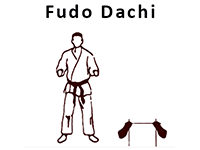 Fudo Dachi
Fudo Dachi
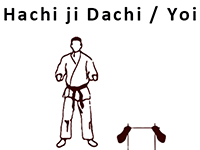 Joi Dachi
Joi Dachi
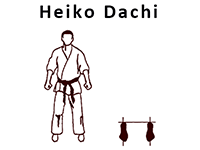 Heiko Dachi
Heiko Dachi
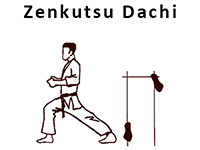 Zenkutsu Dachi
Zenkutsu Dachi
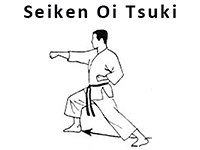 Chudan Oi Tsuki
Chudan Oi Tsuki
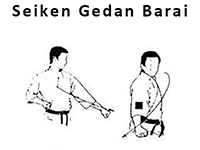 Gedan Barai
Gedan Barai
Kamae - 構え, means posture or base. Kamae is to be differentiated from the word Dachi - 立ち. Dachi refers to the position of the body from the waist down, Kamae refers to the posture of the entire body, as well as encompassing one's mental readiness.Kamae
Hajime - 始め, means begin.Hajime
Hikite - 引き手 means drawing hand: Hiku - 引き, to draw or pull, and Te - 手, the hand.Hikite
Naore - 直れ, is a command to go back into the beginning Kamae.Naore
Yasumi - 休み, is a command to rest or relax.Yasume
Second Kata in this serie.
The
 Fudo Dachi
Fudo Dachi
 Joi Dachi
Joi Dachi
 Heiko Dachi
Heiko Dachi
 Zenkutsu Dachi
Zenkutsu Dachi
 Jodan Oi Tsuki
Jodan Oi Tsuki
 Gedan Barai
Gedan Barai
Kamae - 構え, means posture or base. Kamae is to be differentiated from the word Dachi - 立ち. Dachi refers to the position of the body from the waist down, Kamae refers to the posture of the entire body, as well as encompassing one's mental readiness.Kamae
Hajime - 始め, means begin.Hajime
Hikite - 引き手 means drawing hand: Hiku - 引き, to draw or pull, and Te - 手, the hand.Hikite
Naore - 直れ, is a command to go back into the beginning Kamae.Naore
Yasumi - 休み, is a command to rest or relax.Yasume
The third Kata in this serie. It is performed with the same
 Fudo Dachi
Fudo Dachi
 Joi Dachi
Joi Dachi
 Heiko Dachi
Heiko Dachi
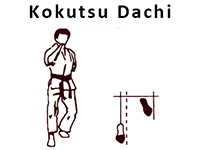 Kokutsu Dachi
Kokutsu Dachi
 Zenkutsu Dachi
Zenkutsu Dachi
 Jodan Oi Tsuki
Jodan Oi Tsuki
 Chudan Oi Tsuki
Chudan Oi Tsuki
 Gedan Barai
Gedan Barai
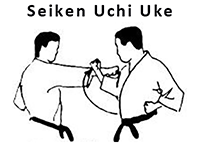 Uchi Uke
Uchi Uke
Kamae - 構え, means posture or base. Kamae is to be differentiated from the word Dachi - 立ち. Dachi refers to the position of the body from the waist down, Kamae refers to the posture of the entire body, as well as encompassing one's mental readiness.Kamae
Hajime - 始め, means begin.Hajime
Hikite - 引き手 means drawing hand: Hiku - 引き, to draw or pull, and Te - 手, the hand.Hikite
Naore - 直れ, is a command to go back into the beginning Kamae.Naore
Yasumi - 休み, is a command to rest or relax.Yasume